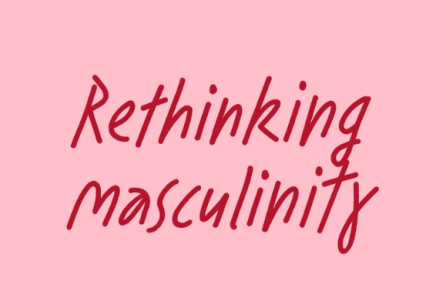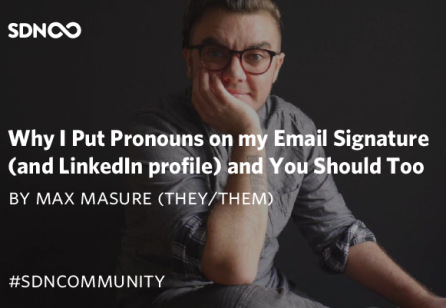Massachusetts is a melting pot of superlatives. In 2015, The Bloomberg U.S Innovation Index granted the Bay State another best: Massachusetts is the most innovative state in the country. Fittingly, this May, the 14th annual Front End of Innovation (FEI) conference was held in Boston’s Seaport District. As a Boston-based service designer, I had the opportunity of engaging with the world’s leading thinkers while advocating for service designers as agents of innovation.
A wide range of terms describing innovation was floating in the air: incremental, disruptive, transformational, to mention a few. It was inspiring and reassuring to witness that “Design Thinking” has become the household name for customer-centric innovation. Utilizing principles of design thinking has transformed the traditional organizational structure and is now widely accepted as a necessary means to profitable ends.
Soon Yu, the Global Vice President of Innovation of VF Corp, theorizes that all truths pass three stages: ridiculed, opposed, and accepted as self-evident. In Europe and Asia, service design is widely embraced but, in the US, it has yet to catch on. Boston, as the reigning hub of innovation, is an ideal environment to isolate clusters, promote collaboration, and foster pride.
1. Building empathy is the first step toward change: How can we be more `empathetic toward those who are reluctant to embrace our ideas and approach? Jonah Berger, the author of Contagious: Why Things Catch On, used the term “Curse of Knowledge” to refer to how our passion blinds us from the perception of our audience. How can we meet them on their level with the knowledge that doing so becomes a stepping-stone in gaining trust and creating change?
2. Creatively play the misfit role: Entertain opposing viewpoints and value profound exploration to develop meaningful solutions to complex problems. According to Alexa Clay, a culture hacker & innovation strategist and the author of The Misfit Economy, playing the role of a misfit in a company requires building self-resilience toward objection and deviation from the norm. Be thick-skinned. Exhibit courage, envision progress and use conflict to create a discourse with strategy and tact.
3. Clone bright spots: Build on previous successes and foster cross-functional collaborations. Locate existing resources and create opportunities for advancement Dan Heath, the author of Made to Stick, Decisive, and Switch, asserts: “Shape the path for better and more collaborations.” Essentially, you can illuminate the path.
4. Build a community of champions: Who are influential champions in cross- functional collaborations? Vince Voron, the VP of Global Brand Content Marketing of Dolby Labs, proposes the question of how can we integrate our design work with other departments like engineering and finance to enable them to succeed on our agenda and empower them in public? Build relationships with key players who have succeeded before and have an in-depth knowledge of the company’s culture that will support a path toward change. Nurture the culture of, acting together and listening and empowering each other in gaining social currency. Share ownership of ideas and build strong relationships by being humble and generous.
5. Balance rationale and emotions: Statistics do not speak to people, human experience speaks to people. Leveraging emotion is a powerful strategy for influencing behaviors. Dan Heath referred to it as “Motivating the Elephant”. Here is where the power of storytelling comes to play. As Jonah Berger describes it: bedtime stories, not bedtime facts.
6. The Art of Simply Making Grand Connections: Vijay Govindarajan, the professor at Tuck School of Business, introduced the one-page document to create a strategy architecture promoting succinct communication. Soon Yu also recommended using the one-page document to illustrate the steps toward change. Highlight what is the single most important thing that people need to do in embracing change. Mark steps that they already have done to orient and encourage them. A large part of my job as a professional service designer is the art of simply making these grand connections: transforming large amounts of information and abstract concepts to digestible, tangible, and grounded in user voices formats as hand-outs or large posters. By showing the bigger picture and creating passion for each team member, we can enrich individuals’ connections to the proposed approach.
7. Creating Investment: A lot of discussions centered on unlocking potential through cross-disciplinary collaborations; however, bringing different stakeholders together even within an internal team requires a lot of effort in bridging gaps and ensuring people are heard and feel valued. Among all the presenters, Karen Hershenson the Leader of the Clay projects of Procter & Gamble, made a profound connection when she pointed out that people’s work is reflection of themselves which can be threatened by change; therefore, creating collaborative environments that see the human underneath and value individual diversity on a communal level is imperative for creating a sustainable path toward change. How can we explain the process, responsibilities, and actions in a transparent manner and then, give people enough time to figure out the process in their pace? By slowing down and displaying thoughts and processes in large and clear formats, we can support participants to get oriented. Also, empowering individuals to express themselves without fear of judgment and/or objection and respecting each member competencies will support us to get the genius out of each other instead of just gathering together.
Service design is on the rise as the key asset for enacting change through creating memorable experiences for customers through engaging all stakeholders; however, our processes and templates should not get in the way of capturing people’s inputs. Relying on our thinking and making skills, we can illustrate the impact of our process, not the process itself, and empower each team member to express and transform their concerns to opportunities. By framing the problem in broad and detailed levels, we can support the team to collectively connect the dots and as Vince Voron put it “make the ordinary experiences, extraordinary”.








Share your thoughts
0 RepliesPlease login to comment